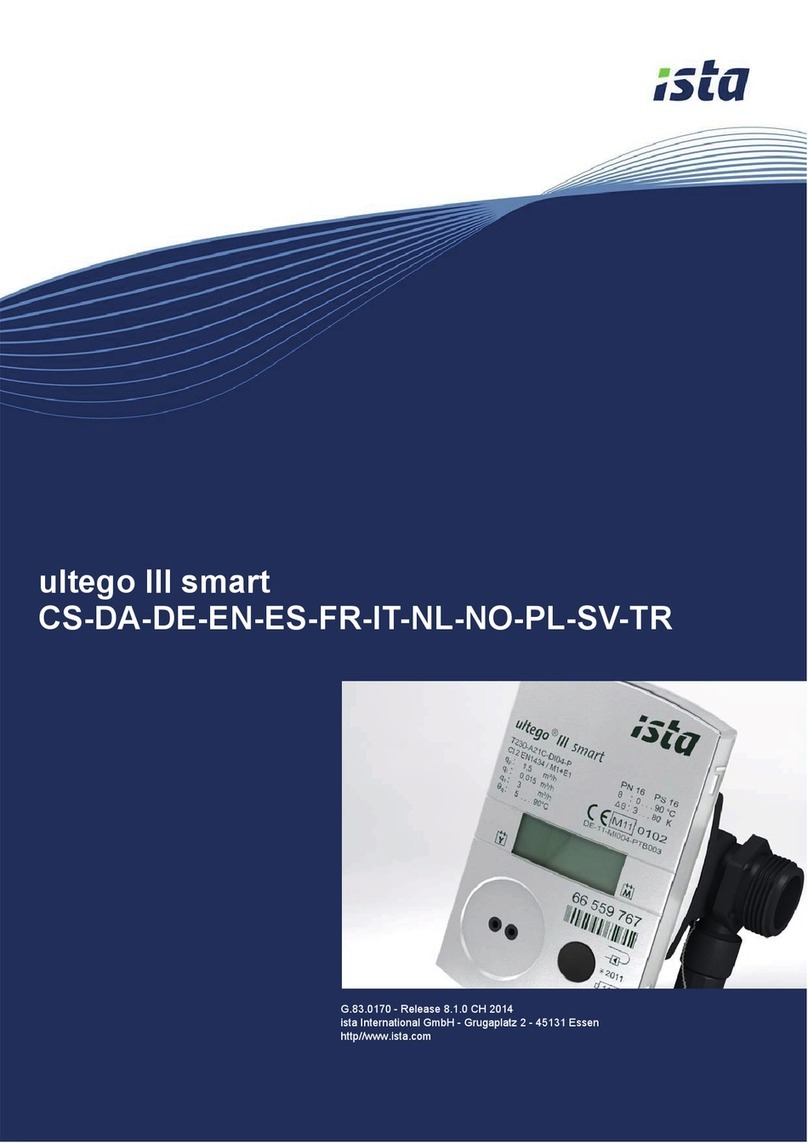Contents 3/26
Contents
1General notes ____________________________________________________________4
Other available documents __________________________________________________4
2Safety information ________________________________________________________5
3Technical data ___________________________________________________________7
Dimensions (qp 0,6 –2,5 m³/h)_______________________________________________8
4Installation _____________________________________________________________10
Installation notes _________________________________________________________10
Examples of installation____________________________________________________11
Installation notes for sensor adapter set (sensors directly immersed) ________________12
4.1 Installation for cooling metering ___________________________________________12
5Dimension of electronic unit_______________________________________________13
6Operating elements ______________________________________________________15
6.1 Displaying current meter status ___________________________________________15
User loop “LOOP 0”_______________________________________________________15
Current values “LOOP 1”___________________________________________________16
Previous month's values “LOOP 2“ ___________________________________________16
General / Communication “LOOP 3“ __________________________________________17
Other “LOOP 4“ __________________________________________________________17
6.2 Monthly values ________________________________________________________17
7Resolution of the display__________________________________________________18
8Power supply ___________________________________________________________18
9Communication _________________________________________________________19
Electronic unit interfaces___________________________________________________19
9.1M-Bus_______________________________________________________________19
9.2 Pulse output __________________________________________________________19
9.3 Wireless M-Bus _______________________________________________________20
Predefined data telegrams _________________________________________________20
Data telegram F000 –stationary radio (sending interval 15 min) ____________________20
Data telegram F001 –mobile data reading (sending interval 20 sec, battery lifetime 6 years)
21
Data telegram F002 –mobile data reading (sending interval 34 sec, battery lifetime 11
years) 21
10 Error codes_____________________________________________________________ 22
11 Order codes (type number key) ____________________________________________23
12 Additional ordering information for wM-Bus__________________________________24
13 Pressure loss ___________________________________________________________ 25

































